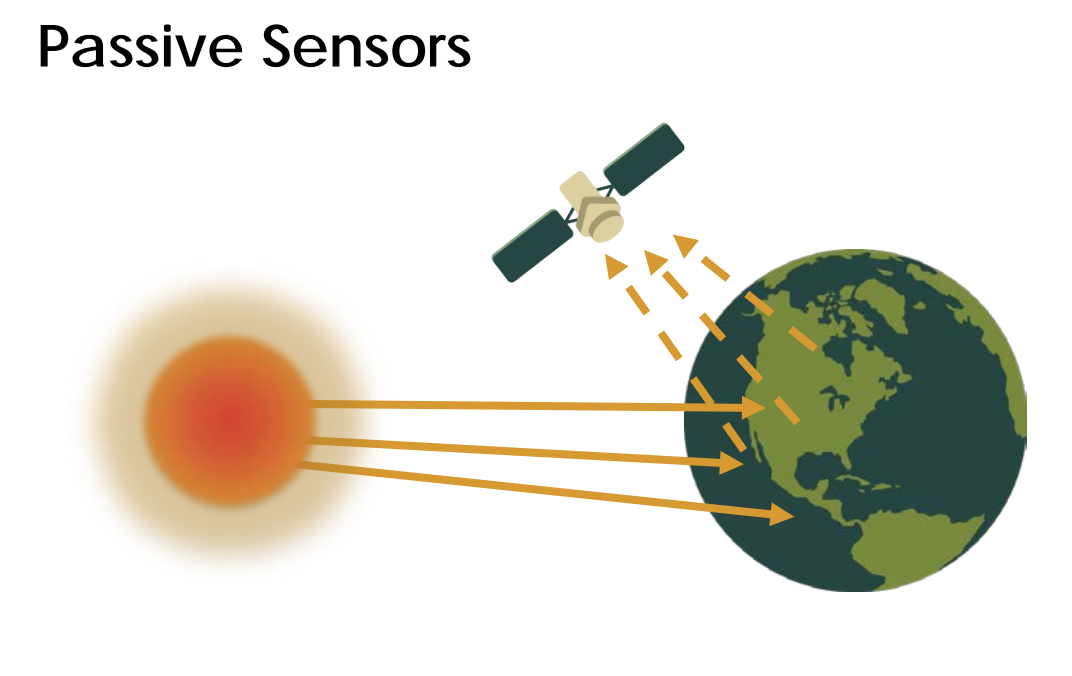Which of the following sensor is example of passive sensor?
of sensors: active sensors, passive sensors, and hybrid sensors. Active sensors emit energy or radiation to gather information, while passive sensors rely on detecting and recording natural sources of energy. Hybrid sensors combine the characteristics of both active and passive sensors to provide more comprehensive data.

Which of the following sensor is a passive sensor
A passive sensor is one which just 'listens' to what is happening. Examples include: A light sensor which detects if a light is shining on it. An infra-red sensor which detects the temperature of an object.
What are examples of active and passive sensors
RADAR and LiDAR are examples of active remote sensing where the time delay between emission and return is measured, establishing the location, speed and direction of an object. Passive sensors gather radiation that is emitted or reflected by the object or surrounding areas.
Is camera an example of passive sensor
Passive sensors detect reflected electromagnetic radiation from a source such as the sun. The camera on your phone is a passive sensor, receiving the reflected spectrum from the sun as it reflects off your body and clothes, thus capturing your likeness in a photo.
Cached
Is GPS a passive sensor
Passive GPS devices include GPS watches, GPS navigation devices and anything that can log location data without transmitting it. GPS devices do more or less the same thing: tell you where you are, or where you went.
What are 6 examples of passive sensors
Examples of passive sensor-based technologies include: Photographic, thermal, electric field sensing, chemical, infrared and seismic. However, as can be the case with some sensors, seismic and infrared light sensors exist in both active and passive forms.
What are 3 examples of active sensors
Examples of other active sensor-based technologies include: scanning electron microscopes, LiDAR, radar, GPS, x-ray, sonar, infrared and seismic.
Is the eye a passive sensor
The eye and optical telescopes are passive remote sensors: they rely on an external light source.
What are the 4 main types of sensors
There are many different types of sensors, the main categories are;Position Sensors.Pressure Sensors.Temperature Sensors.Force Sensors.Vibration Sensors.Piezo Sensors.Fluid Property Sensors.Humidity Sensors.
What is a passive sensor
Passive Sensors
Passive sensor. A passive sensor is a microwave instrument designed to receive and to measure natural emissions produced by constituents of the Earth's surface and its atmosphere.
Is camera sensor active or passive
active sensors
After it illuminates the target, the camera captures the reflected light back to the camera lens. So, cameras are active sensors when the photographer uses flash. It illuminates its target and measures the reflected energy back to the camera.
What are the types of passive sensors
Passive SensorsAccelerometer—An instrument that measures acceleration (change in velocity per unit time).Hyperspectral radiometer—An advanced multispectral sensor that detects hundreds of very narrow spectral bands throughout the visible, near-infrared, and mid-infrared portions of the electromagnetic spectrum.
What are the 3 sensors
As already mentioned, there are three main groups of sensor systems: camera-, radar-, and lidar-based systems.
What sensor can be passive or active
Did you know …a camera provides an excellent example of both passive and active sensors.
What are the types of sensors
Different Types of SensorsTemperature Sensor.Proximity Sensor.Accelerometer.IR Sensor (Infrared Sensor)Pressure Sensor.Light Sensor.Ultrasonic Sensor.Smoke, Gas and Alcohol Sensor.
What are three active sensors examples
Examples of other active sensor-based technologies include: scanning electron microscopes, LiDAR, radar, GPS, x-ray, sonar, infrared and seismic.
What are examples of sensors
The simplest example of a sensor is an LDR or a Light Dependent Resistor. It is a device, whose resistance varies according to intensity of light it is subjected to. When the light falling on an LDR is more, its resistance becomes very less and when the light is less, well, the resistance of the LDR becomes very high.



